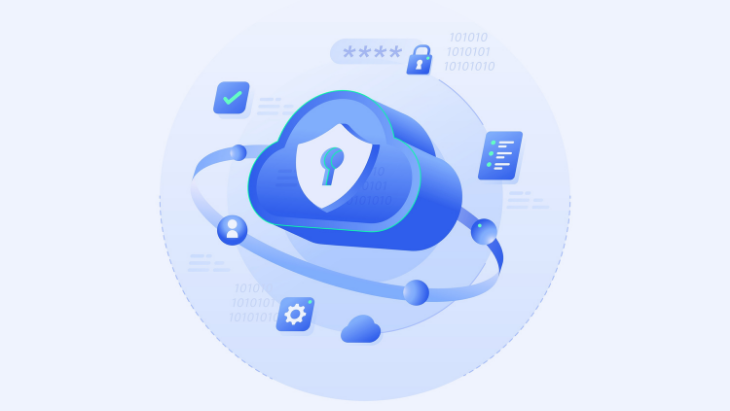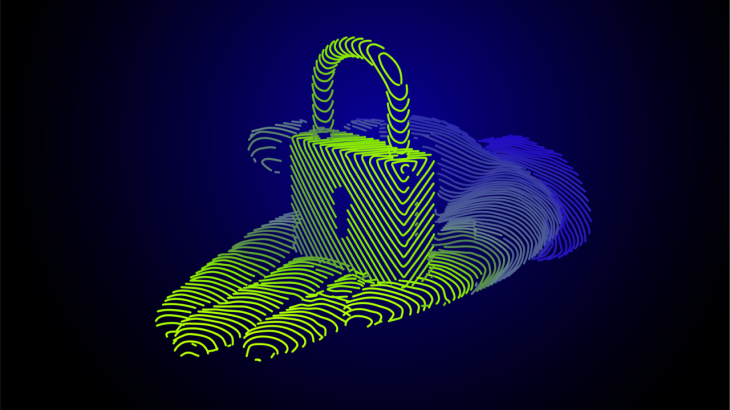
Rethinking Network Access Control: PAM for Network Infrastructure
In a world where digital infrastructure is the backbone of every business, government, and service provider, securing network access is no longer a “nice to have” — it’s mission-critical. While traditional NAC (Network Access Control) systems like Cisco ISE have served their purpose over the years, their limitations have become glaring in the face of modern, identity-driven threats.
As organizations increasingly adopt hybrid cloud models, multi-vendor ecosystems, and globally distributed teams, Privileged Access Management (PAM) for network devices emerges as a new standard. And Kron PAM leads the way — with native support for TACACS+, RADIUS, integrated 2FA, granular authorization, and massive scalability built into its core.
This blog takes you deep into why Kron PAM is not just an alternative to Cisco ISE — it's a next-generation leap forward.
The Shift from Legacy NAC to “PAM for Network”
Traditionally, NAC tools focused on endpoint admission — controlling whether a device could access a network based on its health, location, or compliance status. While this model worked when infrastructures were centralized and access points were fewer, today’s reality is far more complex:
- Remote admins access core routers from across the globe.
- Outsourced engineers maintain critical backbone infrastructure.
- Thousands of devices, from different vendors, operate simultaneously in the same environment.
In this context, controlling who gets in is only the beginning. The real challenge is managing what they do after they’re in.
This is where NAC tools fall short. They do not correlate sessions with individual identities. They do not record what happens in privileged command-line sessions. They do not support fine-grained control per device, per command. Most importantly, they cannot enforce modern security models like Zero Trust, where no access is implicit, and all actions are monitored and verified.
Kron PAM: Designed for Modern Network Infrastructures
Kron PAM was built from the ground up to address the limitations of legacy NAC systems. It is not a traditional PAM that focuses solely on IT systems like Windows servers or databases — it is purpose-built for network infrastructure: routers, switches, firewalls, telecom gear, and mobile backbone components.
Let’s explore what sets Kron PAM apart.
Integrated TACACS+ and RADIUS Servers
Unlike most PAM or NAC solutions that depend on external AAA services, Kron PAM ships with fully integrated TACACS+ and RADIUS servers, enabling seamless AAA across all major network vendors. This ensures:
- Authentication is tightly controlled and identity-bound.
- Authorization can be defined at a granular level (e.g., allowing one user to reload a switch but not change routing tables).
- Accounting is recorded in detail, with session metadata exportable to your SIEM or log analytics tools.
Seamless Integration with Active Directory and Entra ID
One of the most critical components of any privileged access system is how it integrates with identity providers. Kron PAM is designed with this in mind, offering native, out-of-the-box integration with both Microsoft Active Directory (AD) and Entra ID (formerly Azure AD). This ensures that your user management, authentication, and access policies are aligned with your enterprise identity ecosystem from day one.
With Kron PAM, administrators can import users and user groups directly from AD or Entra ID, eliminating the need to manually recreate identity structures or maintain separate user databases. Once imported, policies can be assigned based on group membership, enabling role-based access control that dynamically adjusts as users move through the organization.
For example, a user in the “Network Engineers” AD group can be granted access to Layer 3 devices in the core network, while someone in “Contractor-Access” might only be permitted to use read-only commands on access switches — all managed centrally from Kron PAM’s unified policy engine.
This tight integration not only simplifies user onboarding and offboarding, but also ensures that access is always tied to a verified corporate identity. There’s no need for shared passwords, local device accounts, or custom scripts. Users authenticate using the same enterprise credentials they use for email, VPN, or Microsoft 365 — providing a frictionless experience for admins and a security-first model for the organization.
Passwordless Authentication & SSH Key Management
Kron PAM goes even further by supporting SSH key-based authentication and passwordless login via its integrated Session Manager.
Instead of exposing static device credentials or forcing users to remember complex passwords, Kron PAM brokers access through session manager that handles authentication on the user’s behalf. SSH keys or credentials are injected temporarily — never stored or reused — and sessions are fully audited and recorded.
This approach provides a dual advantage:
- Security: Eliminates credential sprawl, reduces risk of key leakage, and ensures that every access is identity-bound and auditable.
- Usability: Users connect to their target devices with a single click or command, using Kron PAM’s interface or CLI tools, with no need to manage passwords or copy keys.
Whether you're using LDAP, SAML, AD, Entra ID, or even Kron’s internal directory, authentication and session management are streamlined and secure — with full support for multi-factor authentication (MFA) and federated identity models.
Built-in 2FA for TACACS+: Security Without Compromise
One of Kron PAM’s standout features is its ability to extend 2FA into protocols that were never designed for it — such as TACACS+. This is achieved through its internal 2FA server, which allows you to enforce multi-factor authentication for CLI logins, even on legacy network devices.
This is a game-changer. While TACACS+ provides robust control, its lack of native 2FA support has always been a security blind spot. Kron PAM eliminates that weakness, bringing Zero Trust principles to your command-line sessions.
Granular Authorization and AVP Management
Kron PAM enables Attribute-Value Pair (AVP) customization and command-based policy enforcement. Whether you need to allow a contractor to only run "show" commands on a router, or block a junior admin from using "conf t" on core devices — Kron PAM gives you full control.
This level of policy flexibility is particularly valuable in environments with shared responsibility models, such as:
- Telecoms outsourcing network maintenance
- Energy companies using third-party integrators
- Large enterprises managing segmented networks
Agentless Deployment Across Multi-Vendor Environments
No agent? No problem.
Kron PAM is entirely agentless, meaning it does not require any software installation on managed devices. This is crucial for environments with:
- Legacy systems and network devices that don’t support agents
- Devices with limited resources
- Tightly regulated industries where change control is strict
It supports all major network vendors — Cisco, Ericsson, Huawei, Nokia, and ZTE.
Real-Time Session Monitoring, Logging, and Auditing
Kron PAM records every privileged session — keystroke by keystroke — with full video and text playback available for auditing. Sessions are:
- Monitored in real time
- Filtered via policy engines
- Exported to SIEM tools for correlation with other security events
This not only strengthens security but also dramatically improves incident response and compliance audit readiness.
Scalability Proven in the Real World
It’s easy to talk about scalability in theory — it’s another thing to prove it at scale.
One of the largest telecom operators in the EMEA region, with over 40 million subscribers, deployed Kron PAM to manage access to more than 160,000 network devices. The infrastructure spanned multiple continents, included gear from five different OEMs, and required sub-second access latency for operational teams.
Kron PAM handled it effortlessly, thanks to its distributed architecture and load-balanced nodes, each capable of 5,000+ transactions per second. The system was integrated with Active Directory, allowing all admins to use corporate credentials and enforcing policy without complexity.
This isn’t a lab demo. This is production-grade scalability, powering one of the largest backbone networks in the world.
Compliance-Driven Architecture
Kron PAM was built with compliance in mind. It supports all major frameworks out of the box, with features like:
- Identity-bound session logging (NIST 800-53, ISO 27001)
- Granular access control and role separation (PCI DSS 4.0)
- Centralized logging and dashboarding (CIS Controls v8)
- Multi-tenant policy management for MSPs or telecom operators
Custom reports and real-time dashboards provide audit-ready visibility into who accessed what, when, and what they did.
Conclusion: The Future is PAM for Network
The world has moved beyond trusting a device just because it made it through the front gate. Modern cybersecurity demands continuous verification, real-time control, and forensic visibility across every privileged session.
With Kron PAM, organizations can:
- Secure access to thousands of network devices — agentless
- Enforce identity-based policies, down to the command
- Monitor and record sessions in real time
- Prove compliance with confidence
- Scale effortlessly, even in telecom-grade environments
In short, Kron PAM is more than a PAM solution — it’s the new standard for network infrastructure security.
To learn more about how Kron's PAM solutions can help safeguard your organization's strengthen your overall IT security, contact us today. Our team of experts will be happy to provide you with further information and assist you in finding the best PAM solution tailored to your specific needs.
*Written by Elif Akbulut. She is a Senior Product Owner at Kron.
Highlights
Other Blogs

More Than a Billion People Were Affected by Corporate Data Breaches in 2018

The Invisible Threat: Why Anomalies in User Behavior Are a Major Risk to Your Company

There Is No True Cloud Security Without Comprehensive Command and Control















